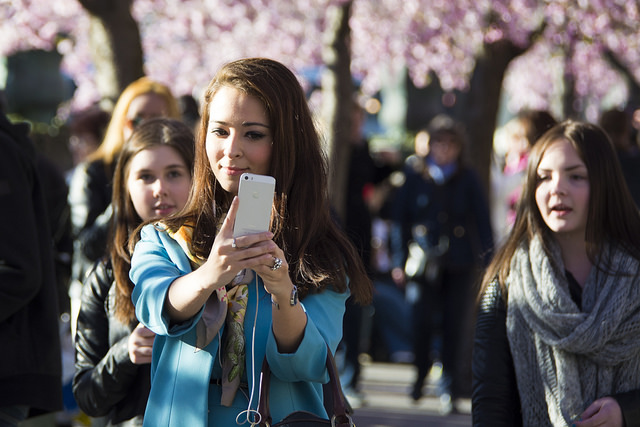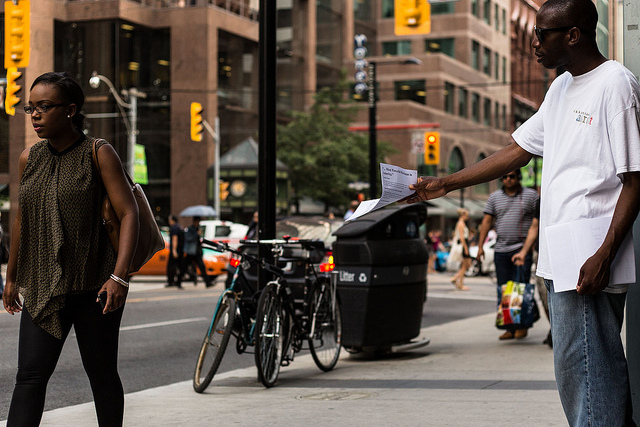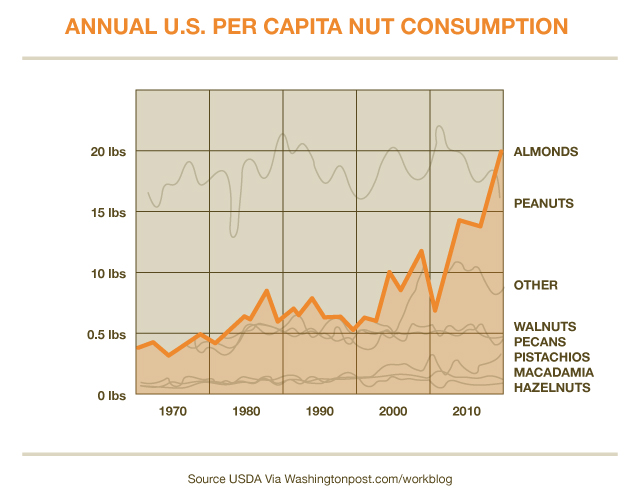Unlock the Magic in Your Story Now
Get the Free 20 questions to Ask Before Launching Your Idea workbook when you sign up for occasional updates.
Get the Free 20 questions to Ask Before Launching Your Idea workbook when you sign up for occasional updates.
A Lesson In Unlocking Value
 When you book a room at the Hilton or the Hyatt you either have a pleasant conversation with someone in a call centre who you will never hear from again, or you get a polite, well-crafted email in your inbox. Your expectation about the experience is based on the photos from the website and the reviews on Trip Advisor. No value is created at the time of booking. It’s a transaction. Nothing very meaningful is exchanged.
When you book a room at the Hilton or the Hyatt you either have a pleasant conversation with someone in a call centre who you will never hear from again, or you get a polite, well-crafted email in your inbox. Your expectation about the experience is based on the photos from the website and the reviews on Trip Advisor. No value is created at the time of booking. It’s a transaction. Nothing very meaningful is exchanged.
When you enquire about a room on Airbnb you’re encouraged to reach out to the host by telling him your story.
“Tell John a little about yourself.
What brings you to Melbourne? Who’s joining you?
What do you love about this listing? Mention it!”
You are already investing in the connection with John (not just his apartment) right out of the gate. Contrary to what some believe, the Airbnb platform is not just about access, it’s about fostering connectedness from the first interaction. A ton of value is intentionally created because of the interactions guest and hosts have before the booking is made and the guest arrives. Trust and empathy are exchanged and felt along with check in instructions—which it turns out are secondary.
Business analysts comment that Airbnb unlocked the latent value in unused spaces. True—but the greater value they deliver is a sense of belonging for travellers. They are helping to redefine what hospitality should be, beyond room service and a quiet place to sleep for the night.
The reason a 5 star hotel can’t compete is because it’s tough to create meaning at scale.
The business that does will always be out front.
There are a dozen opportunities for you to unlock value before your customer walks through your door? Start with one—see where it leads you.
Image by Calitexican.
Share this article
What’s Your Customer’s Why?
filed in Marketing, Storytelling, Strategy
 It’s true that people buy from companies they like. We feel an affinity with some brands and not others and our purchasing decisions reinforce our values. The Internet has given rise to a new kind of savvy, connected customer. She seeks out purpose driven brands whose ideals resonate with hers.
It’s true that people buy from companies they like. We feel an affinity with some brands and not others and our purchasing decisions reinforce our values. The Internet has given rise to a new kind of savvy, connected customer. She seeks out purpose driven brands whose ideals resonate with hers.
While it’s important to spend time working out why your business exists beyond profit making and how you create difference for your customers, it’s equally important to do the work of understanding your customer’s motivations, frustrations, values, hopes, dreams and desires.
How can you hope to sell something to someone if you don’t know who she is and how your purpose intersects with hers?
Image by Patrik Nygren.
Share this article
A Category Of One
filed in Marketing, Storytelling, Strategy
 The sign was in the perfect spot—right next to the traffic lights at a notoriously slow moving T-junction, to maximise the number of people who would see it. The message was clear:
The sign was in the perfect spot—right next to the traffic lights at a notoriously slow moving T-junction, to maximise the number of people who would see it. The message was clear:
“NEED A WEBSITE? 04040404040”
What’s also clear is that the people who call are not likely to be the customers that the web designer is hoping for. It’s hard to do meaningful work when you try to appeal to everyone, because you end up competing on price instead of quality, hours clocked instead of value delivered.
Anyone can build ‘a’ website. It takes guts and talent and commitment to become known as the go-to person for ‘the’ website.
Your work is defined by the story you are asking your customers to believe about you every day.
You are in control of the story you tell.
How you tell that story gives you the opportunity to choose what you do and who you do it for.
Why not aim to be in a category of one?
Share this article
What’s Your Email Marketing Strategy?
filed in Marketing, Storytelling, Strategy
 Digital is fast and cheap. Now we can save a dollar or two on stamps that are no longer needed, plus the time and energy spent licking them and stuffing envelopes. We don’t even need to walk to the post box to mail our messages. Because it’s easy to reach anyone with an email address we sometimes take less care to craft those messages than we should.
Digital is fast and cheap. Now we can save a dollar or two on stamps that are no longer needed, plus the time and energy spent licking them and stuffing envelopes. We don’t even need to walk to the post box to mail our messages. Because it’s easy to reach anyone with an email address we sometimes take less care to craft those messages than we should.
Mr X has spent three years working on his project. More than a thousand days of planning, innovation and development have gone into shipping it and yet he’s probably spent ten minutes crafting the first and only email the reader who forwarded this has ever received from him.
[Actual email with names and details changed. Please DO NOT USE this template.]
Hi —————,
We’ve just launched our product! It’s an xyz.
This is what it does.
Check it out [link].
Our website is live and we need your help.
You can pre-order for $X, and if you like it, please share this as far and wide as you can.
Feel free to give us some love on social media too.
Twitter [link]
Facebook [link].
Thanks!
Mr X
———————————————————————————————————————————————————————————————————————————————————————————
The irony is that Mr X hasn’t reached any of the 500 connections on his email list at all.
There’s a difference between making contact and making a meaningful impact. The impact you hope to make begins one person at a time long before the day your product ships.
If we’re not prepared to spend just as much time understanding how the people we hope to serve feel, as we do developing our products and services, then we haven’t earned the right to reach out to them. The first question to ask as part of any marketing strategy is, “Is this generous or selfish?”
Generosity wins every time.
Image by Kat NLM.
Share this article
We Don’t Buy Things
filed in Marketing, Storytelling, Strategy
 Once upon a time and not so long ago, almonds were a fatty, to-be-avoided snack.
Once upon a time and not so long ago, almonds were a fatty, to-be-avoided snack.
Today they are a protein-rich superfood. Almond sales in the US have increased 220% since 2005.
When, and how exactly did almonds change?

Of course almonds haven’t changed at all, what has changed is what we believe about them and that changes everything. Those same beliefs drive the value of a red rose on Valentine’s Day and a bottle of water at the airport.
We don’t buy things, we buy the story those things enable us to tell ourselves about who we are and what matters to us.
Share this article
The Power Of The Minimum Viable Experience
 I like my insurance company, or should I say I like the people who work for my insurance company. I’ve been with them almost ten years and have no intention of switching. Their call centre team is well trained and they really go out of their way to be helpful and make the customer feel understood. This company’s people are definitely their greatest asset. The process of getting through to the people who do all the heavy lifting in the claims department is another matter.
I like my insurance company, or should I say I like the people who work for my insurance company. I’ve been with them almost ten years and have no intention of switching. Their call centre team is well trained and they really go out of their way to be helpful and make the customer feel understood. This company’s people are definitely their greatest asset. The process of getting through to the people who do all the heavy lifting in the claims department is another matter.
It’s not easy to sit for 31 minutes listening to a recording that repeatedly tells you one thing while your current reality demonstrates otherwise. I finally gave up listening to how valuable my time was and then out of curiosity called back to see how long it would take to get to a salesperson, by following the phone prompts to the new policy sales department. The answer was 70 seconds from start to finish. Two rings from the final automated prompt and a cheery salesperson picked up.
On the day that I called there were 113 people in the claims queue, which equates to a 40 minute wait. The guy in sales told me that he thought there had been a recent natural disaster in another state—hence the high call volume. He had never seen that many people in the claims queue.
Of course my first instinct was to ask why they don’t just add more people to the claims line. We all know that even with excellent data and planning it’s not always possible to redirect resources at short notice. Sometimes you can’t deliver the service that meets a customer’s expectations. If you can’t do that the next best thing is to manage her expectations. Often the best solution doesn’t mean fixing the actual problem.
What’s worse than a 40 minute wait—is a 40 minute wait without information. What we detest more than the wait is the feeling of uncertainty. There was an opportunity to change the story I was replaying in my head while I was on hold and to create the minimum viable experience (MVE) by simply tweaking the recording.
In customer service the minimum viable experience (MVE) is the experience with the highest return on customer satisfaction versus resources.
There is always an opportunity to create value at the point before the product or service is delivered. Uber has built a business valued at $40 billion by doing just that. They recognised the pain of that uncertainty and took it away, thus creating intangible value and massive emotional benefits for their customers.
When a customer orders a taxi to take her to the airport she wants to get to the airport, but the service starts before the actual journey, with a step that creates certainty in the moment—knowing that she will arrive on time is priceless.
When an Apple evangelist goes to the Genius Bar with a problem he wants his device back up and running, but the step before that is believing that the ‘Genius’ can and will help him. The Genius is trained to deliver a minimum viable experience by telling the customer exactly what he’s doing every step of the way. The phrase “don’t worry I’m here to help, we’re going to sort this problem out for you,” works like magic and best of all it costs nothing.
When we think about delivering the optimum customer experience we strive to create a scenario that meets the customer’s wants, often forgetting that what the customer wants is more than a cab that takes her from A to B, a computer that works, or a human being that picks up the phone right away. There are so many opportunities to create intangible value and subtle expectations that we can fulfil by being more empathetic and without spending a cent.
There is always a way to leave the customer feeling better. It’s up to us to find it.
Image by JF Gornet.
Share this article
The Meaningful Advantage
 The newspaper delivery van still drives up our street at 4am on Saturday morning. You can hear the rolled, plastic wrapped weekend edition thud onto the neighbour’s lawn as the driver takes aim from the window. And even at 4am you can’t help wondering if this service will be meaningful to enough people to last another year. How does this matter in a world where a new story broke before the ink was dry and while the delivery driver slept?
The newspaper delivery van still drives up our street at 4am on Saturday morning. You can hear the rolled, plastic wrapped weekend edition thud onto the neighbour’s lawn as the driver takes aim from the window. And even at 4am you can’t help wondering if this service will be meaningful to enough people to last another year. How does this matter in a world where a new story broke before the ink was dry and while the delivery driver slept?
The answer is clear and yet the presses are kept going.
Shifts in relevance are not just tied to products and services impacted by the digital economy. Legacy brands in all kinds of industries are being squeezed because they have become less meaningful. They stood still while their customers moved on without them. There were plenty of agile competitors waiting to take up the slack.
Twitter has no trouble trumping the weekend newspaper. Chipotle thrives while McDonalds struggles. Harry’s easily persuades 100,000 men to stop buying expensive branded razors.
Airbnb reaches 25 million guests with a million listings.
There is more to market shifts than decline in demand. The success of a product or service is dependent on more than capability, distribution, marketing and reach. Yes all of these tactical advantages matter, but they need to be organised in service of where the customer wants to go, not simply around what’s working to bring in money today.
It isn’t the biggest or most innovative brand that wins—it’s the one that’s most meaningful to the people it serves.
Image by ScaarAT.
Share this article
Changing The Customer
 The craft beer industry is flourishing, naturally that’s eating into the market share of the bigger brewers. Budweiser sales in the US have dropped by more than two thirds since 1988 and the company is losing mindshare and market share amongst 21-27 year olds.
The craft beer industry is flourishing, naturally that’s eating into the market share of the bigger brewers. Budweiser sales in the US have dropped by more than two thirds since 1988 and the company is losing mindshare and market share amongst 21-27 year olds.
The solution seems to be to change what that customer believes.
All marketing is about inviting or creating change of some sort. We work hard to change behaviour, perception and sentiment. We try to shift expectations, consensus and even cultures. Hundreds of billions of dollars in ad revenue are spent every year trying to change what people believe in the hope of getting them to switch or to act differently.
It’s easier to influence and impact the people who want to listen, than it is to persuade people who don’t to change their beliefs.
Far better to organise your business to create, cultivate and nurture customers of your own—people you can really matter to, than to change the worldview of your competitor’s customers.
Image by Anders Adermark.
 A pitch is what you tell the world about you. It’s presented as the polished version of your story. The one you hope people will grasp and believe within a few short minutes as they reach for their wallets.
A pitch is what you tell the world about you. It’s presented as the polished version of your story. The one you hope people will grasp and believe within a few short minutes as they reach for their wallets. In a world of abundant choices the work of our businesses has to go beyond ‘helpful acts’ and minimum requirements. Understanding the distinction is our new advantage.
In a world of abundant choices the work of our businesses has to go beyond ‘helpful acts’ and minimum requirements. Understanding the distinction is our new advantage.